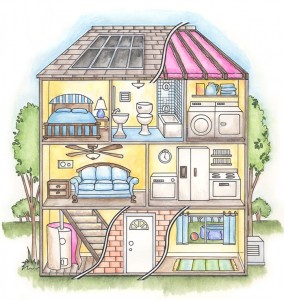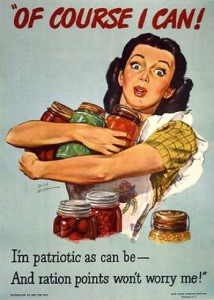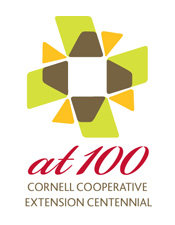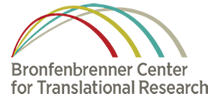 As I drive my children to their after-school activities, I’ve noticed more and more for sale signs along the roads around our house – a sure sign of spring! As we approach house-hunting and moving season, it’s a good idea to look at the evidence on house-hunting. [Read more…]
As I drive my children to their after-school activities, I’ve noticed more and more for sale signs along the roads around our house – a sure sign of spring! As we approach house-hunting and moving season, it’s a good idea to look at the evidence on house-hunting. [Read more…]
The evidence on house-hunting
Evidence-based canning: Preserve your summer bounty
 My family belongs to a Community-Support Agriculture farm, which means we get a big box of fresh veggies from a local farm each week. In addition, we like to pick blueberries, tomatoes and raspberries locally. Put together, it means we need to find a way to preserve all of this local fresh food for the winter months. [Read more…]
My family belongs to a Community-Support Agriculture farm, which means we get a big box of fresh veggies from a local farm each week. In addition, we like to pick blueberries, tomatoes and raspberries locally. Put together, it means we need to find a way to preserve all of this local fresh food for the winter months. [Read more…]
How to keep teen parents in school
 The evidence shows that high school dropouts earn less money, have poorer health outcomes and are more likely to get into legal trouble. And teenagers who are pregnant or who are parents are especially vulnerable to dropping out of school. There are hundreds of programs designed to keep teens in school. But how effective are they, especially for pregnant and parenting teens?
The evidence shows that high school dropouts earn less money, have poorer health outcomes and are more likely to get into legal trouble. And teenagers who are pregnant or who are parents are especially vulnerable to dropping out of school. There are hundreds of programs designed to keep teens in school. But how effective are they, especially for pregnant and parenting teens?
New evidence about the federal food stamps program
 Nearly 45 million American receive help purchasing food each year through the Supplemental Nutrition Assistance Program (SNAP), commonly called food stamps. Here on EBL, we’ve written about the federal program in the past, specifically how it helps keep families out of poverty. [Read more…]
Nearly 45 million American receive help purchasing food each year through the Supplemental Nutrition Assistance Program (SNAP), commonly called food stamps. Here on EBL, we’ve written about the federal program in the past, specifically how it helps keep families out of poverty. [Read more…]
What we know – and what we don’t – about Omega-3 fatty acids
 Over the past four decades, there have been thousands of studies examining the health benefits of Omega-3 fatty acids – building blocks our bodies use to create cell membranes and maintain the connections between brain cells.
Over the past four decades, there have been thousands of studies examining the health benefits of Omega-3 fatty acids – building blocks our bodies use to create cell membranes and maintain the connections between brain cells.
The medical community’s excitement over this nutrient began when observational studies of non-western diets – in Japan and among Eskimos in Greenland, for example – found significantly lower rates of heart disease and other chronic medical conditions. (Humans can’t produce omega-3 fatty acids, so we must get them by eating fish, walnuts, flaxseed and green vegetables.)
Dozens have studies have identified these types of correlations. But earlier this year, a meta-analysis published in the Journal of the American Medical Association, which included 20 clinical trials involving nearly 70,000 people, concluded omega-3 fatty acids did not prevent heart attacks, strokes or deaths from heart disease.
Proponents of omega-3s point out that the authors of the JAMA analysis used the an especially strict standard to determine statistical significance. (Using the typical standard would have found a 9 percent reduction in cardiac deaths.)
But other systematic reviews – like this one by the Cochrane Collaboration – found it unclear whether omega-3 supplements reduce the risk of cardiac deaths.
So, what’s the bottom line? This is one case where the evidence is truly unclear. One challenge is that longitudinal diet studies are difficult to perform because there are so many variables in what people eat over long periods of time. The it can be tough to differentiate between omega-3s consumed as part of a diet versus those taken in a supplement. It is clear that foods like salmon, tuna and green vegetables are good for us – and including them in our diets is a step in the right direction. But we need more evidence to determine their exact effects, and to establish whether it’s worthwhile to take omega-3 supplements.
Evidence-based energy: What we really know about hydraulic fracturing
A newer method for extracting natural gas from layers of shale deep below the earth’s surface – called hydraulic fracturing or hydrofracking – has ignited debates across the nation. Proponents say that natural gas key to the country’s energy future. (Burning natural gas produces fewer greenhouse gases emissions than coal and oil.) But opponents say this method for extracting it poses risks to ground water supplies.
Over the past several years, Cornell researchers have mounted an unprecedented response to the issue. They’ve stepped up research efforts to collect and develop as much evidence as possible about hydrofracking. And they are reaching out to help individuals and communities across New York to help them make decisions about the benefits and dangers of drilling.
They have created the Cornell Cooperative Extension Natural Gas Resource Center, which is made of a 12 faculty members from a wide array of disciplines—including sociology, environmental sciences, and geology—and 20 extension educators. The group has compiled information for people impacted by hydraulic fracturing including individuals considering leasing their land, community groups, and local governments.
The Resource Center’s web site is a treasure trove of information on the topic including how geologists use seismic data to determine if natural gas is accessible, how to negotiate a lease for gas drilling and the economic impacts of drilling.
If you live in an area where natural gas drilling is a possibility, you’ll definitely want to dig into this resource.
Evidence-based house hunting
 Since my daughter was born this spring, our family has felt a bit crowded in our three-bedroom ranch home. So we decided to put our house on the market this spring and look for a new place that will provide more space.
Since my daughter was born this spring, our family has felt a bit crowded in our three-bedroom ranch home. So we decided to put our house on the market this spring and look for a new place that will provide more space.
Like most things in life, we’ve found house hunting is a fairly subjective activity. There is a range of features we’re looking for: a nice yard for the kids to play in, a modern kitchen, storage space, a two-car garage, and a friendly neighborhood. Of course, we haven’t found one house with everything we want, so we’re weighing the pros and cons to make the best choice for us.
But there are some elements of house hunting where the evidence comes into play. It’s these items you don’t necessarily think about when you walk into a house for the first time, but seem to be those important basics that can cost a lot of money, or can make living in a new home a miserable experience.
To find out what I needed to know, I turned to Cornell Cooperative Extension. They have a whole topic area dedicated to home, including some useful information about buying a home. Their research-based fact sheets on mold, lead, and radon have helped us to keep an eye out for potentially hazardous conditions. Thanks to the information they provided, here are a few specific actions we’re taking in our house hunt:
- If we find a house that was built before 1978, we plan to test for lead-based paint.
- No matter what house we find, we will have a radon test to make sure that it doesn’t have high levels of this dangerous gas, especially since Tompkins County is considered a high radon-risk zone.
- Moisture in closets and basements will be a sign for us to check for mold in potential new homes.
In addition to these safety aspects, the Internet now provides financial histories of houses with only a few mouse clicks. Most county assessor’s offices offer background such as previous sale prices, tax bills and a list of renovations made. While this has always been public information, it’s now much easier to access. In addition, web sites like http://zillow.com and http://trulia.com compile assessor’s data to provide neighborhood averages and comparisons.
When making a large purchase like a home, it’s wonderful to have all of this data – literally at your fingertips.
Happy Birthday to Cooperative Extension!
 As Cornell Cooperative Extension celebrates its 100th year, I thought it would be a good time to explain about bit about the Cooperative Extension system. At Cornell, many of us collaborate with Cooperative Extension regularly. But those of you in the real world might be thinking, “What the heck is Cooperative Extension, and why does it matter to me?”
As Cornell Cooperative Extension celebrates its 100th year, I thought it would be a good time to explain about bit about the Cooperative Extension system. At Cornell, many of us collaborate with Cooperative Extension regularly. But those of you in the real world might be thinking, “What the heck is Cooperative Extension, and why does it matter to me?”
The Cornell Cooperative Extension system was created a century ago to serve a function similar to what this very blog serves today – to help share evidence-based information and practices with the general public.
In the age before the Internet, this meant disseminating information in workshops, classes and even visits to local homes and businesses. So the Cooperative Extension system opened offices in local communities with employees who would gather information from university professors, and then disseminate that information to people local communities.
In New York State, the first such office opened in 1911 by a Cornell graduate named John H. Baron. Over the next eight years, 54 more extension offices opened across New York State.
Over the years, Cooperative Extension programs educated New York businesses and families everything from the safest way to defrost a turkey to the best methods for irrigating strawberry fields.
This system developed into a two-way street where community members and businesses pose questions that are funneled to university researchers, who conduct research to find the answers.
Today, Cornell Cooperative Extension is focused on helping families, businesses, government agencies, and other organizations in five key areas: agriculture and food systems; children, youth and families; community and economic vitality; environment and natural resources; and nutrition and health. Cooperative Extension professionals provide information on contemporary issues including renewable energy, early childhood education and cooking with local foods.
The Cooperative Extension System is truly an invaluable resource for helping people and organizations from all walks of life make decisions based on the best available evidence.
Youth development that works: Positive findings on the 4-H program
On EBL, we’ve talked a lot about research evidence on problems affecting adolescents, from alcohol use, to video games, to social networking, to sex (I can hear teens who read this starting to hum the tune to “These Are a Few of My Favorite Things”…).
One might ask: Okay, what about the positive side? We’re glad to say that there’s very encouraging news about a program that really works.
One of the most popular and extensive youth programs in the United States is the 4-H program. There are over 6,500,000 members in the U. S. The 4-H program offers activities for kids from 5-19 who are organized in 90,000 4-H clubs. Throughout its history, 4-H has promoted leadership skills, good citizenship, and life skills development. In recent years, it has branched into health promotion programs (like obesity prevention and fostering physical activity) and science, engineering, and technology (“SET”) programming.
All this sounds great, right? But as EBL readers know, we look for the evidence. And now we have it, thanks to the ground-breaking work of Prof. Richard Lerner of Tufts university, one of the country’s leading experts on youth development. Lerner and colleagues expected that the mentoring from adult leaders and the structured learning that goes on in clubs might lead to number of desireable outcomes for children. This led them to do a longitudinal, controlled evaluation of the impact of being a 4-H member. Beginning in 2002, they have surveyed oaver 6,400 teens across the U. S.
The researchers have issued a major new report, looking at the findings on youth outcomes over nearly a decade. To really dig into the results, you should read the very accessible report. Among the many findings, according to the report summary, is that 4-H participants:
- Have higher educational achievement and motivation for future education
- Are more civically active and make more civic contributions to their communities
- Are less likely to have sexual intercourse by Grade 10
- Are 56% more likely to spend more hours exercising or being physically active
- Have had significantly lower drug, alcohol and cigarette use than their peers
- Report better grades, higher levels of academic competence, and an elevated level of engagement at school,
- Are nearly two times more likely to plan to go to college
- Are more likely to pursue future courses or a career in science, engineering, or computer technology
All in all, very impressive findings. So let’s join in the 4-H pledge (can you find the four “H”s?):
I pledge my head to clearer thinking,
my heart to greater loyalty,
my hands to larger service
and my health to better living,
for my club, my community, my country, and my world.
A pretty good approach to living, and one that seems to work for millions of children and teens!




